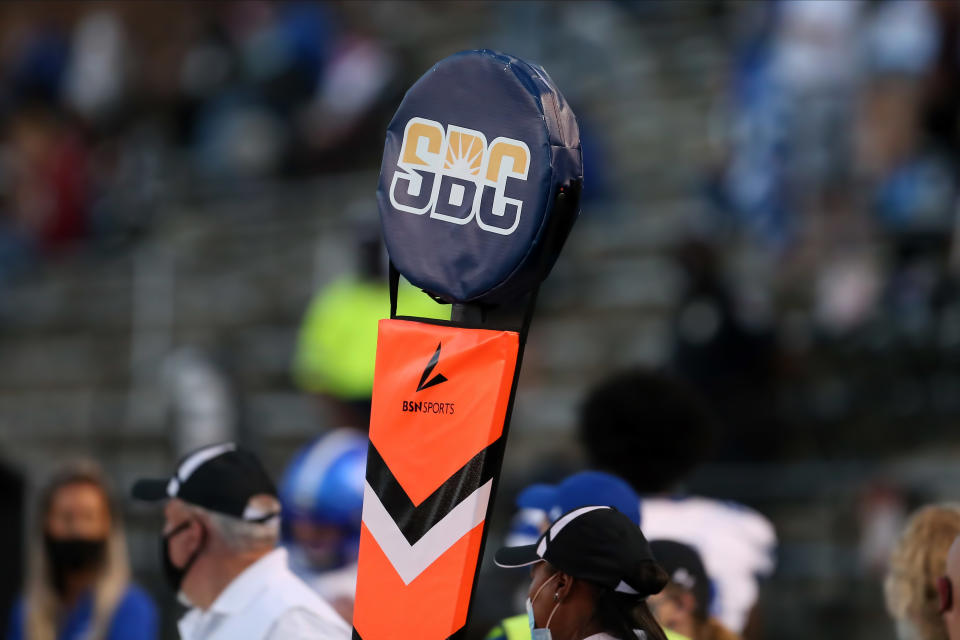Sun Belt Conference first to tap Federal Reserve loans for nonprofits
Months after opening up its emergency loans to nonprofit organizations, the Federal Reserve has officially extended credit to its first borrower: a Division 1 college sports conference.
If the Sun Belt Conference’s experience with the program is any indication, confusion over the program terms — and tight eligibility requirements — may be preventing more nonprofits from getting a loan of their own.
The Sun Belt Conference tapped the Fed’s Main Street Lending Facility for a $4.4 million loan in early October. With COVID-19 breaking up its athletics schedule, the New Orleans-based Sun Belt turned to its lender to beef up its cash position.
“We don’t really know what’s coming at us and at any times when you have uncertainty, having access to cash is just really important,” Sun Belt Commissioner Keith Gill told Yahoo Finance.
The conference, like other collegiate leagues, had tapped the Paycheck Protection Program earlier in the year.
The Sun Belt supports the athletics programs for 12 colleges based in the southeast, home to the Louisiana Ragin’ Cajuns and the Appalachian State Mountaineers. Normally, the conference draws revenue from sponsorships, broadcast rights to its games, and distributions from the National Collegiate Athletic Association (NCAA).
That makes the Sun Belt’s Division I football a major revenue stream. Even though the conference only had to push back the start of its football season by a few weeks, the costs of COVID-19 testing and the uncertainty ahead pushed the conference to reach out to First Bank and Trust in mid-June.
‘Confusing for borrowers’
The Fed announced that it would be launching a novel program to push banks to originate cheap credit as part of its March actions to save the U.S. economy. The Fed worked for months to engineer the Main Street Lending Facility, and underwent several revisions before finally launching for applications in June.
The Fed is still moving the goal posts on the program, having lowered the minimum loan size for the second time just two weeks ago.
Nonprofits had to wait until September to apply, about three months after the Fed announced its intention to expand the facility to eligible 501(c)(3) or 501(c)(19) organizations with between 10 and 15,000 employees.
Jeff Ehlinger, Sun Belt’s banker at First Bank and Trust, said that even after waiting for the program to open, working with the Fed and applying for the loan took an additional few weeks.
“It’s confusing for borrowers, it’s confusing for banks, and then the process of really getting a Main Street loan to the finish line through the entire process through the Fed is a little bit more difficult than a traditional loan,” Ehlinger told Yahoo Finance.
Nonprofit eligibility
The Fed has said the Main Street program can support up to $600 billion in loans but even when including the for-profit arm of its Main Street Lending Facility, the Fed has only extended just over $4 billion in credit as of November 4.
Lenders have linked low uptake to borrower hesitancy to take on more debt in addition to the availability of cheaper options (Main Street loans are priced at LIBOR plus 300 basis points).
First Bank and Trust and Sun Belt found the pricing enticing enough but were primarily attracted by the loan’s feature allowing deferral of principal payments for the first two years of the five-year term.

Ehlinger said Sun Belt may be an outlier, since in his view a lot of nonprofits would not qualify because of restrictions on organizations with weak earnings before interest, depreciation, and amortization (EBIDA). The Fed requires 2019 EBIDA to be at least 2% of its operating revenue but nonprofits, as the word implies, often operate at low margins.
Gill says the Sun Belt had a strong balance sheet and cash position before applying for the Main Street loan, which may have been the reason for why it was able to apply for one at all.
“I actually think it’s a good program, I think it’s really going to help us do what we need to do,” Gill said.
He joked that the only way it could be better was if it were free money with automatic forgiveness, features of the PPP.
But only programs from Congress can offer grants. The Fed by statute cannot forgive any of the loans made under its various emergency facilities, raising questions of whether or not the Fed is playing the wrong sport given its skill set.
Brian Cheung is a reporter covering the Fed, economics, and banking for Yahoo Finance. You can follow him on Twitter @bcheungz.
Fed calls for more transparency from financial firms on climate risks
Powell's odds of Fed chair renomination brighten with President-elect Biden, GOP Senate
Powell: Fed not 'out of ammo' to boost COVID-19 hit economy, can expand balance sheet, liquidity
Less-educated Asian Americans among hardest hit by job losses during pandemic
A glossary of the Federal Reserve's full arsenal of 'bazookas'
Read the latest financial and business news from Yahoo Finance
Follow Yahoo Finance on Twitter, Facebook, Instagram, Flipboard, SmartNews, LinkedIn, YouTube, and reddit.
